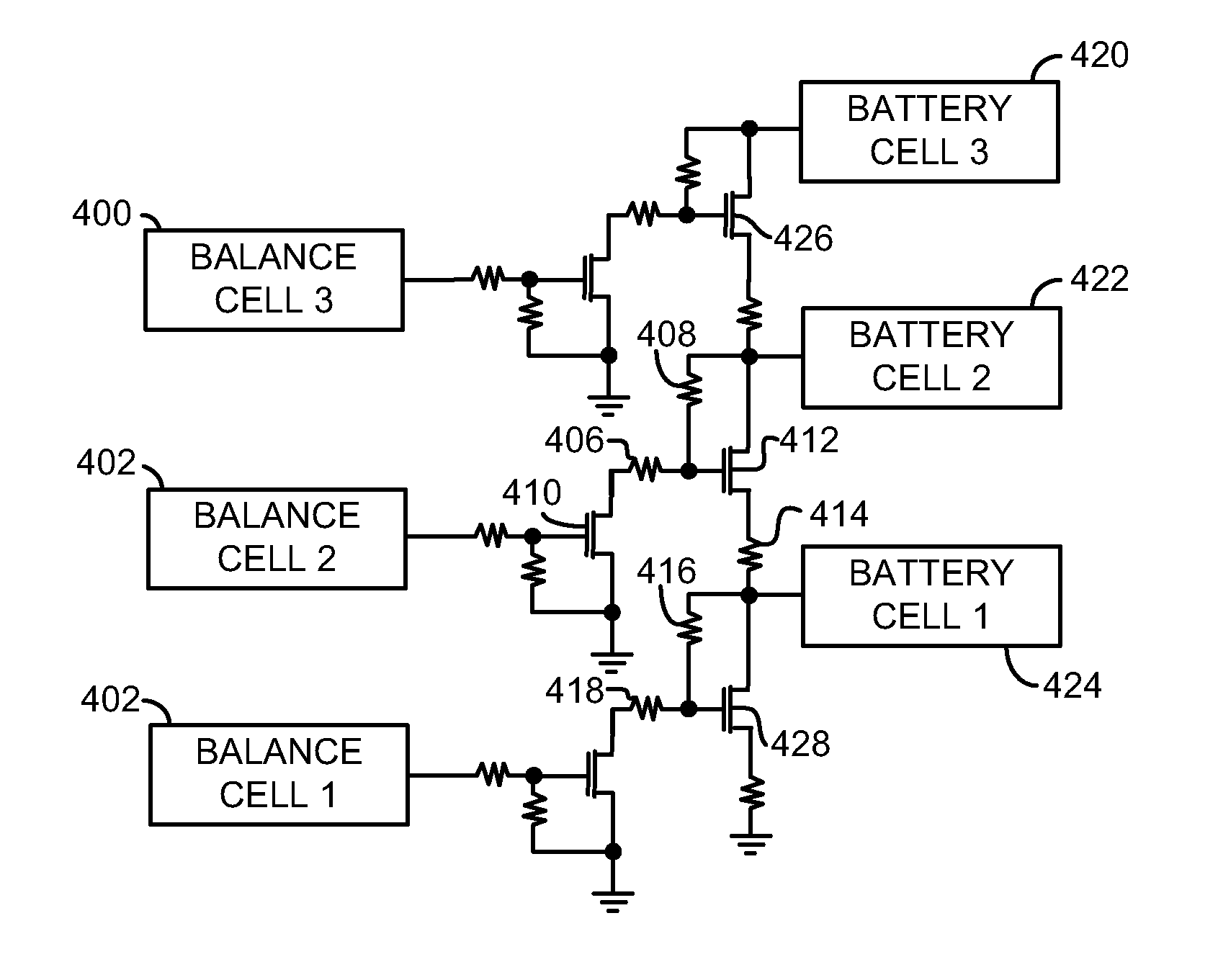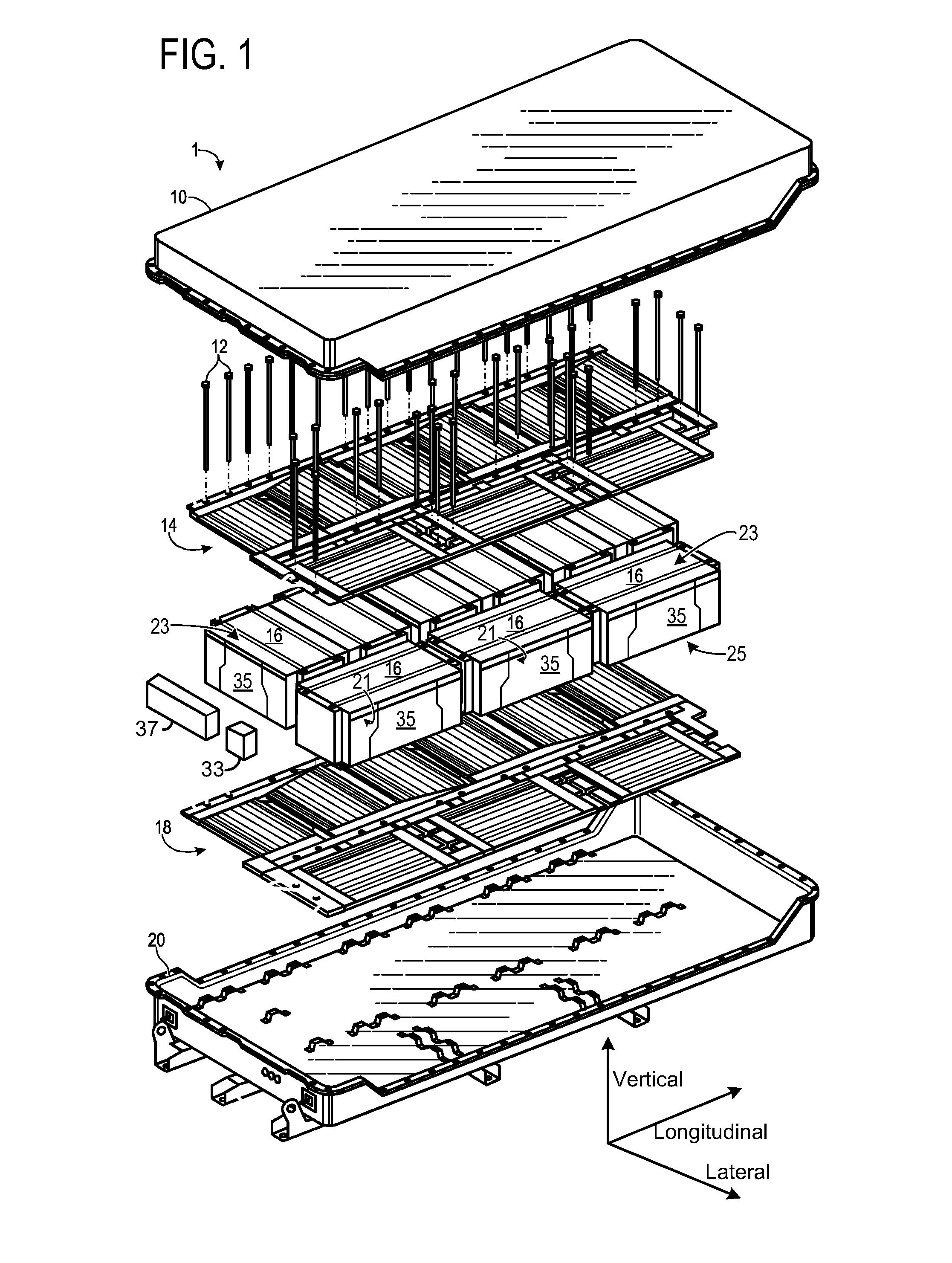Method for Opportunistically Balancing Charge Between Battery Cells
a battery cell and charge balancing technology, applied in the field of balancing can solve the problems of difficult to determine when it is desirable difficult to determine how much charge is drained or added to a battery cell, and undesirable to balance charge between battery cells at lower voltages. achieve the effect of accurately determining a difference in charge, accurate balance and more charge capacity
- Summary
- Abstract
- Description
- Claims
- Application Information
AI Technical Summary
Benefits of technology
Problems solved by technology
Method used
Image
Examples
Embodiment Construction
[0019]The present description is related to balancing charge between battery cells of a battery pack. In one example, the battery cells may be included in a battery pack as illustrated in FIG. 1. Battery cells such as those illustrated in FIGS. 2-3 may be combined as shown in FIG. 1. Charge differences between battery cells may be reduced or eliminated by the simplified circuitry shown in the electrical schematic of FIG. 4. FIGS. 5A and 5B show battery cell voltage characteristics for new and aged battery cells. The method of FIG. 6 provides for recognizing when open circuit voltage provides more information and using the information during charge balancing between battery cells.
[0020]FIG. 1 shows an exploded view of a battery assembly 1. The battery assembly may include a cover 10, coupling devices 12, a first cooling subsystem 14 (e.g., cold plate), a plurality of battery cell modules 16, a second cooling subsystem 18 (e.g., cold plate), and a tray 20. The cover may be attached to...
PUM
 Login to View More
Login to View More Abstract
Description
Claims
Application Information
 Login to View More
Login to View More - R&D
- Intellectual Property
- Life Sciences
- Materials
- Tech Scout
- Unparalleled Data Quality
- Higher Quality Content
- 60% Fewer Hallucinations
Browse by: Latest US Patents, China's latest patents, Technical Efficacy Thesaurus, Application Domain, Technology Topic, Popular Technical Reports.
© 2025 PatSnap. All rights reserved.Legal|Privacy policy|Modern Slavery Act Transparency Statement|Sitemap|About US| Contact US: help@patsnap.com



